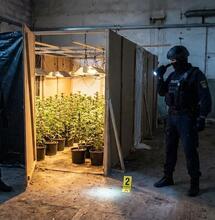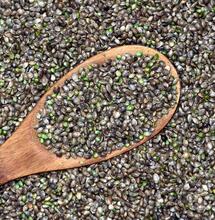Ten Steps to Judging Cannabis Entries

Judging marijuana and hash entries can be a daunting task, but these tips will make the job easier.
Judging marijuana and hash entries can be a daunting task, but these tips will make the job easier.
I really enjoy playing master of ceremonies and judging at Cannabis competitions. Some of my fondest memories over the years have been from such events. I have also noticed there is a wide variation in the amount of forethought that goes into the judging portion of events, so here are some suggestions to help keep things running smoothly - modify the following tips as needed.
|
Keeping the identity of these buds a secret until after the judging is completed helps to prevent bias |
1) Collect all entries two to four weeks in advance of the day of the event. As soon as they are received, samples should be checked for moisture content and certain steps taken to prevent overly-wet entries from developing mold (even if an overly-wet entry is grounds for disqualification, there is no reason to waste it). Make sure all entries are clearly marked.
2) Blind the entries. There are several ways to do this, but here is a simple example:
Take several identical storage containers, one for each entry. Having someone assist - preferably someone who will not be involved with the rest of the judging - helps keep things honest.
While you are out of the room, have them:
Put the entry in a closeable container. Write the identity of the entry on a piece of paper. Fold the paper so that the name cannot be read and tape it to the bottom of the container. Then, repeat for each of the entries. Next, rearrange the sealed containers (which should appear very similar to each other) randomly.
Have someone else rearrange the containers (yes, again) and number them, marking the corresponding number on the outside of each container. This can also be done with a paper key or a variety of other methods to create a blind sample. The intent is to prevent intentional or unintentional prejudice by either the test giver or test taker through keeping both ignorant of the identity of a given sample.
If done correctly, each container will have a name on a folded piece of paper taped to the bottom that matches the weed inside the container that is labeled with a randomly-assigned number. At this point, nobody should have any clue which number corresponds to which name (except, potentially, for the person who taped the names to the bottom of the jars, which is why it is best to select a trustworthy close-mouthed someone who will not be involved in the rest of the process).
|
If you have a lot of samples to consider, place blind labels on them [Credit: Mila at the Pollinator Company] |
From this point until the final results are determined, each sample is only referred to by its number.
3) Send off samples identified by number for lab testing (if performed). Find out the submission requirements for whatever tests are going to be executed. If pesticide/fungal tests are going to be performed, they should take place and the results received prior to giving samples to the judges.
It is better form to say that the test results of the sample they were about to smoke showed that they should not smoke it, rather than that the test results of the sample they just smoked showed that they should not have smoked it. Other than to avoid hazardous materials, keep the test results unread until the announcement of the winners to avoid bias based on the test results.
4) Prepare samples for judging, There should be enough in each sample for at least a couple of bowls. Mark each sample with the corresponding number from the container. Leave enough in each container for final judging.
5) Create a web form or paper form for the judges to complete for each entry. Since there is often a large number of initial entries, I suggest that, prior to the event, the judges be sent samples of each for an initial round of judging. Over the course of a few days, if need be. The instructions on how to correctly fill out the recording form should be clear.
6) Judges should take care to pace themselves while trying samples. Smoking to incoherency may be entertaining, but it is not fair to the entrants. Consume enough to be able to judge, but not to excess until the day's judging is done (Then, as they say, "Moderation in all things, even moderation.")
|
Considering the opinions of others allows for an objective judging of Cannabis products |
7) If each judge has many samples to try, I recommend doing it in groups and then comparing the best from each group against each other, perhaps on the following day. For example, if there were twenty-five samples to try, take note of the best from the first five, and then the best from the second five, and so on. Then compare the best of each to each other. Make sure to use a clean smoking instrument each time in order to avoid residue from one entry having an effect on subsequent entries. Take the top results from this round of judging to either determine a winner or to create a finalist list for live judging at the event.
8) Since the first round of judging should report on the particular flavor, aroma, etc., the final judging can simplified to taking additional notes, awarding additional points and selecting their personal favorite. This also allows for a fail-safe in the event that things with the day of judging go awry for some reason, as there has already been some judging information collected.
9) Once the judging has been completed, the identity of each number can be learned by opening the folded paper taped to the bottom of the containers and comparing it to the number written on the side. Match the number to the judging results and announce when appropriate.
10) As a final tip, I suggest being respectful when judging other people's work. Although trash-talking may be popular in certain sports circles, in my experience, the cats with the best weed tend to be rather laid-back folk - I assume in part because they smoke some of the best weed. Discouraging people to try diminishes available variety, while encouraging people to improve elevates the art.
Peace, love and puka shells,
Grubbycup



